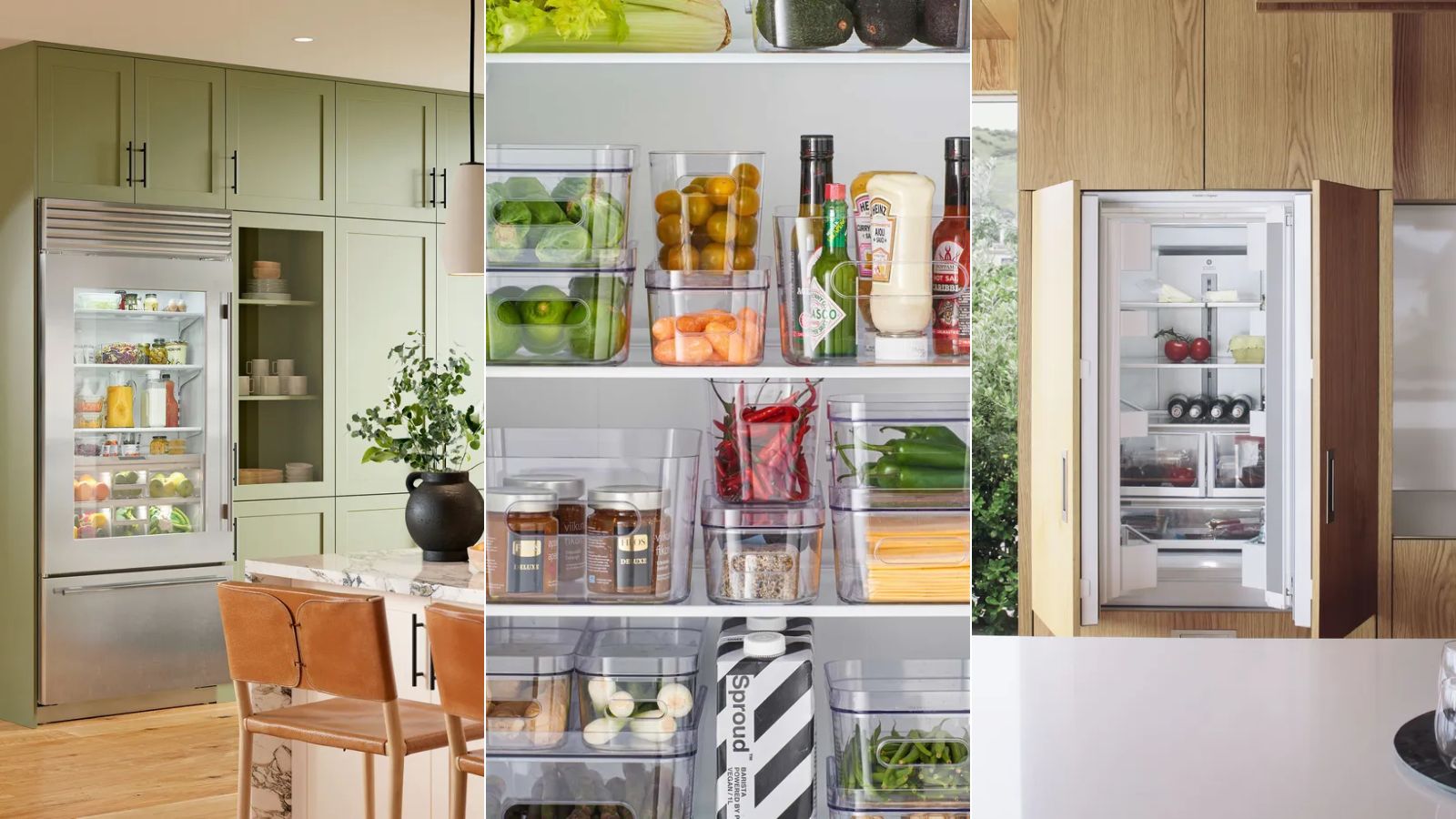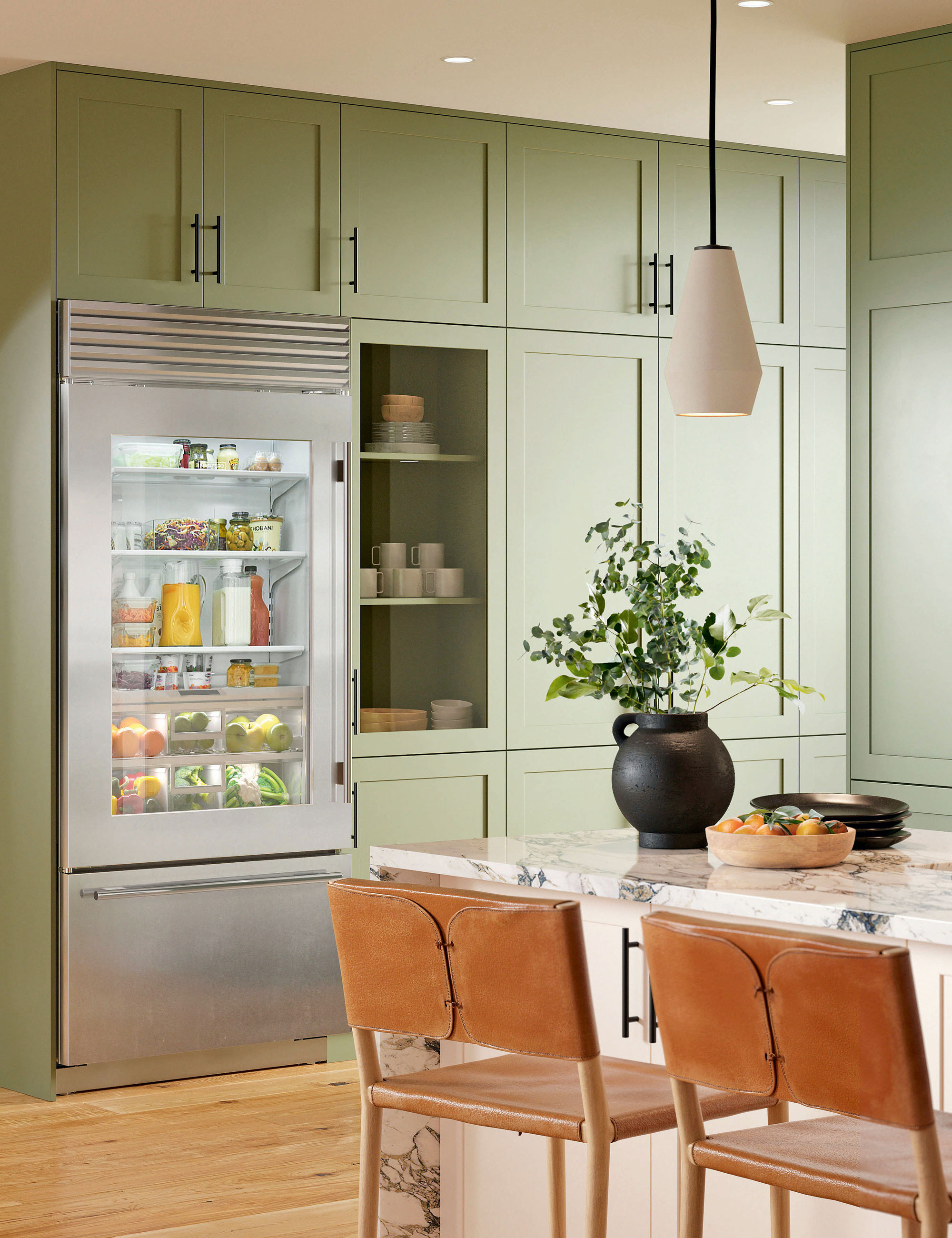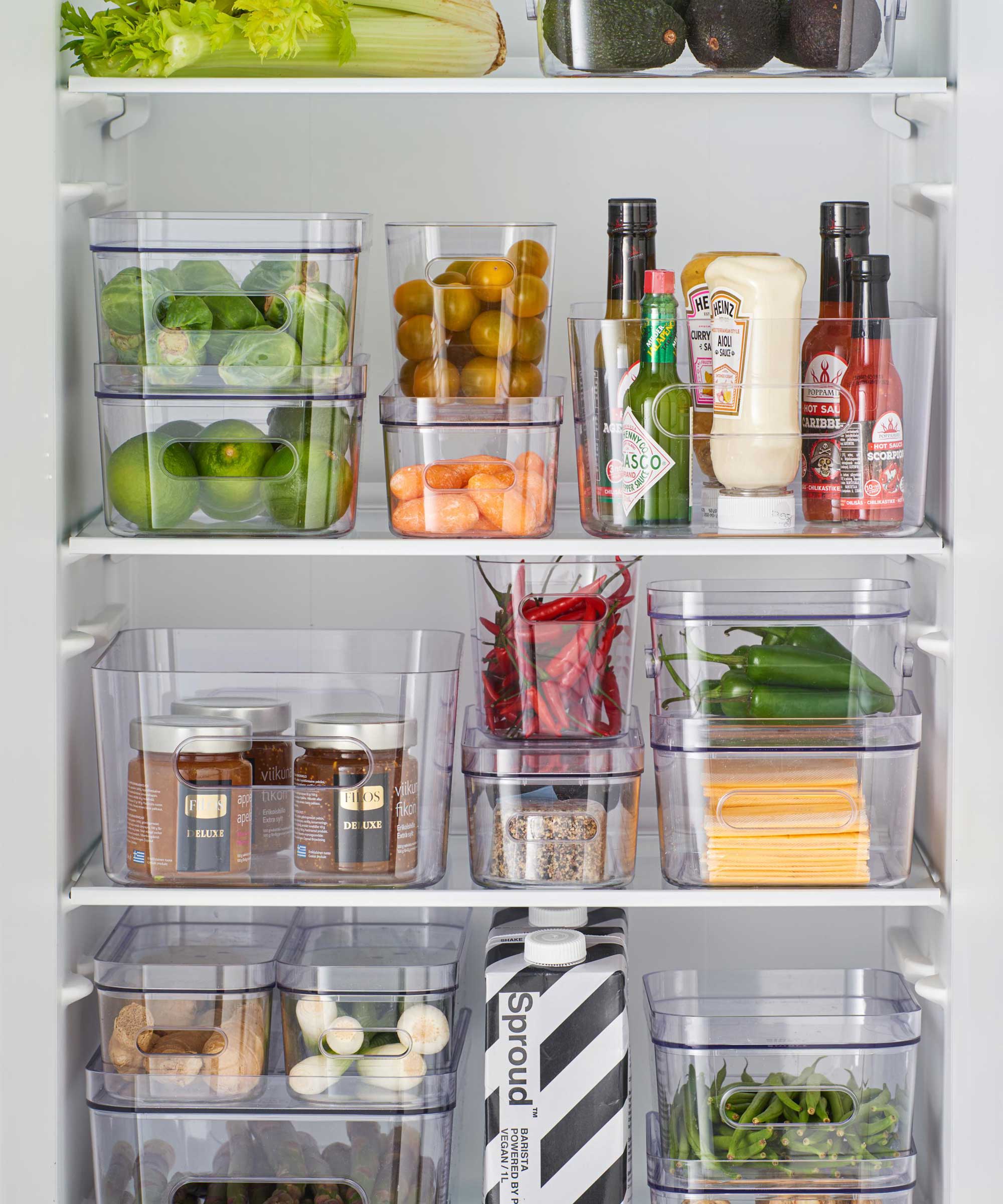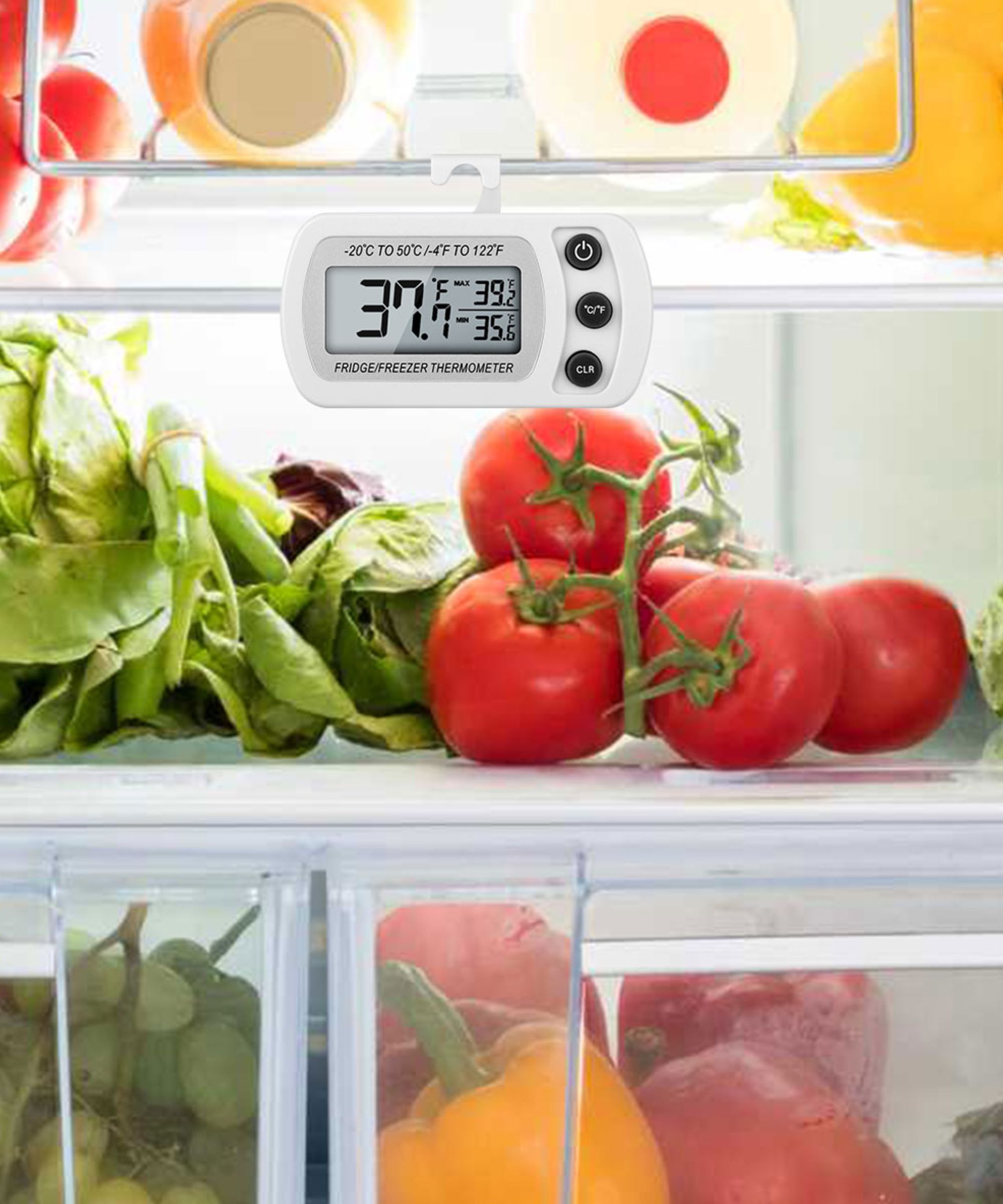
People with organized refrigerators tend to follow a set of unwritten rules to maintain an efficient kitchen – but we're not here to gatekeep.
The key to maintaining an organized fridge is discipline, regular maintenance, and practical solutions. Adopting these habits becomes easier over time and can significantly enhance how you organize your refrigerator to make cooking easier while preventing food waste and contamination.
Below, we've explained the wasteful and unsafe refrigerator organization mistakes people with well-organized fridges tend to avoid – and we share the habits to adopt instead.
Things people with organized refrigerators never do
In a well-organized refrigerator, you'll rarely find wilted greens, expired meat, or overcrowding, which can make maintaining the correct temperature difficult. Adhering to the do's and don'ts of those who have mastered an organized refrigerator is a surefire way to make life easier and food storage more effective.
1. Neglect food planning

One of the primary objectives of keeping a refrigerator organized is to minimize food spoilage and reduce food waste. This process involves a careful consideration of what is bought and consumed.
Without proper planning, food may not be consumed before it expires, which is a waste of money and can leave you needing to do another shopping before dinner. You will also be more likely to over-buy when shopping, and an overstocked refrigerator can get food pushed to the back and forgotten about.
For this reason, people with organized refrigerators always keep track of their food inventory, meticulously planning their meals and grocery shopping to ensure they use up all perishable items in the order that they will go off and avoid overstocking the refrigerator.
A clever trick for meal planning can be to designate a shelf or section to store ingredients intended to be eaten for dinner that night. Having everything ready and waiting allows you to master meal prep and enjoy a home-cooked meal without stress. It's a simple way to stay on track with your food budget and reduce food waste.
Being mindful of food purchases and consumption will not only save time and prevent food waste but also promote a more sustainable and cost-effective lifestyle.
2. Leave food in it's original packaging

Leaving food in its original packaging is often an ineffective use of space in a refrigerator, and once the packaging has been opened, it will no longer be a safe or effective way to preserve food's freshness and avoid contamination.
'Proper food storage in air-tight and fitted containers allows you to stack items and arrange food in the refrigerator to maximize space and things stay fresh as long as possible,' advises Audra George, pro-organizer at Pretty Neat.
Be sure to choose containers with materials that won't contaminate food. Containers made from durable materials such as glass, steel, or BPA-free plastic are less likely to degrade over time and contaminate food, making them ideal choices.
This will promote a healthier eating environment by keeping your refrigerator systematic and accessible.
These clear stackable containers are designed to fit together without sliding. Plus, they are dishwasher-safe.
These silicone containers are ideal for refrigerator and freezer storage. These are dishwasher-safe and airtight.
These smaller glass storage boxes are an eco-alternative for leftovers that keep food fresher for longer.
3. Ignore labels

Monitoring food expiry is essential not only for an organized refrigerator but also for preventing food waste and consuming out-of-date food.
As we know, decanting food goods into proper containers rather than leaving them in their original packaging is key to keeping food fresh and maximizing storage space. So, to keep track of dates, it's essential to label food containers with expiry dates and potentially even cooking instructions.
If you are creating meal plans, you can also use labels to signal which foods are to be cooked together in particular recipes on particular days. For example, say you have decided you need to use up your chicken, peppers, and spinach on Monday due to their upcoming expiry dates; you can label them all with a 'Mon' or '1' to indicate they should be cooked for Monday's meal. The same goes for every other day of the week, using corresponding numbers or words.
This means no items will go unnoticed, simplifying selecting the right ingredients.
4. Forgetting to monitor the temperature

Many people don't realize that refrigerator temperature settings can fluctuate, ultimately affecting the freshness and safety of stored food. This is especially true when refrigerators are overcrowded, or the seals are worn out.
Investing in a refrigerator thermometer, regularly checking the temperature, and making adjustments if necessary can help ensure that food is kept at the optimal temperature range. These EEEkit refrigerator thermometers are a best seller at Walmart.
But how cold should a refrigerator be? Usually between 35°F and 38°F or 1.7°C and 3.3°C is the perfect range to prevent spoilage and bacterial growth. You can also adjust the temperature according to the season and the amount of food stored.
5. Avoid rotating foods

When unloading groceries into the refrigerator, organized people never push older items to the back to put new things at the front. This classic error can lead to older items being forgotten and expiring before use. To guarantee that no food goes to waste by spoiling, consider implementing a systematic approach to storing food by adopting the 'first in, first out' rule.
'This involves a rotation strategy, which entails moving older items to the front of the refrigerator for easy access and visibility to ensure everything gets used before it expires,' explains Polya Petrova, a cleaning professional at Fantastic Services. 'Meanwhile, newly purchased items are placed towards the back so that older items are always used first. This helps prevent food waste and ensures that nothing languishes in the refrigerator past its prime.'
To make this easier, consider investing in a dispenser or Lazy Susan. These will prevent you from needing to reshuffle your refrigerator completely after a shop.
6. Ignoring cross-contamination guidelines

Cross-contamination is a significant concern in food safety, especially when storing various food items in the refrigerator. Individuals with well-organized refrigerators are particularly mindful of this risk and take proactive measures to mitigate it.
One such measure is the careful storage of raw meat. 'They would never place raw meat above ready-to-eat food to prevent contamination of anything below it,' says Lisa Andrews. 'Placing raw meat on the bottom shelf prevents juices from dripping onto other foods, effectively reducing the risk of bacterial contamination. This simple yet effective strategy is crucial for maintaining food safety and preventing foodborne illnesses.
Aleksandar Kolarov adds: 'Organized people promptly remove expired items to help maintain freshness and prevent the growth of harmful bacteria. They also separate raw meat and seafood from ready-to-eat foods to prevent cross-contamination and foodborne illness.'
One of the best ways to make sure your ingredients remain accessible to prevent the need to rearrange your refrigerator regularly is organizing items according to the frequency of use (as well as expiry dates), and placing frequently used items at eye level for easy access.
For example, frequently used items like milk or condiments are placed at eye level or in the front of the refrigerator for quick retrieval, while less frequently used items are stored towards the back or on the lower shelves.
With a little bit of planning and organization, you can keep your refrigerator tidy and your food fresh for longer.







